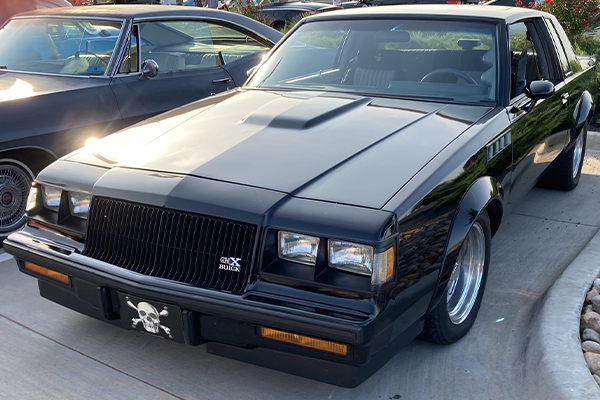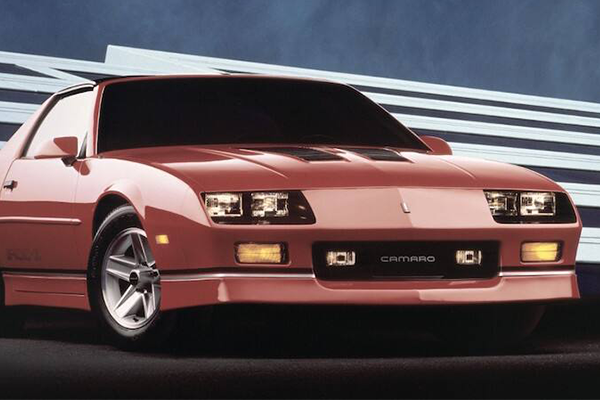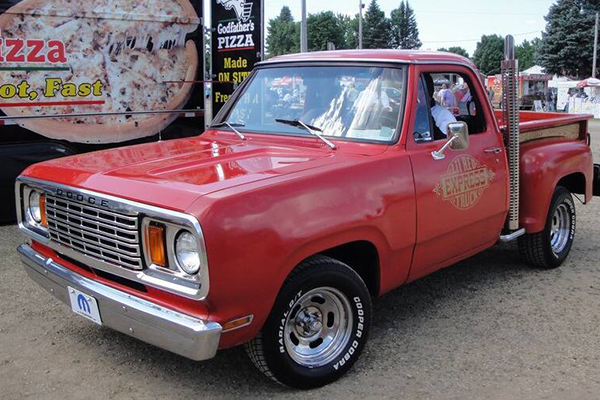From timeless icons to everyday essentials, Crucial Cars examines the vehicles we can’t live without. In this installment, we tackle the mighty mid-sizer, the Ford Ranger.
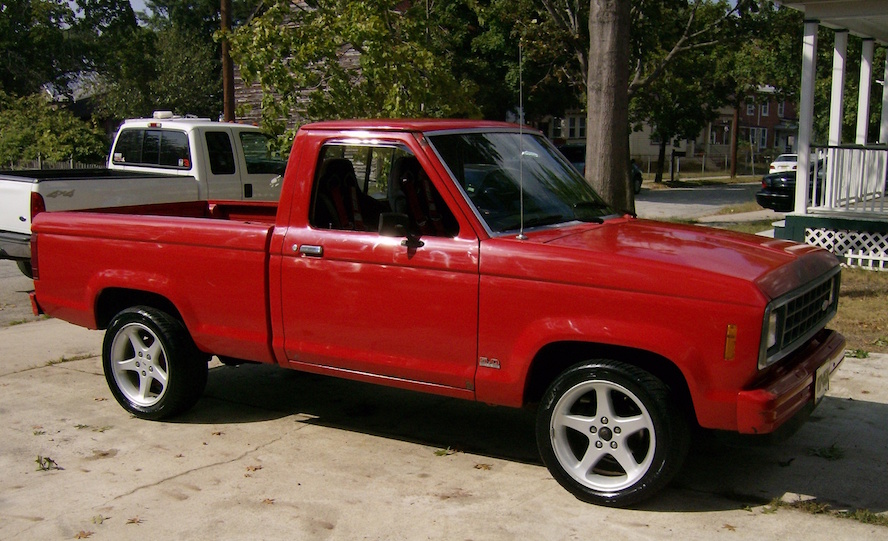
1983 Ford Ranger, Source | Car Gurus
Compact takes the stage
Since 1982, when the first 1983 model year Ranger rolled off the assembly line, fuel efficiency, maneuverability, parking ease, and lower cost was what it was all about. Planning for that, the first Ranger began in 1976 with Ford’s intention to build a compact pickup that was somewhat similar to its full-size offering, only more economical. Once released, the Ranger replaced the Ford Courier, an American version of the Mazda B-Series. The Courier was a tough little truck in its own right, but was lacking in amenities and was rust-prone.
Those early Rangers came with a variety of engine choices, including a 72hp (54kW) 2.0L and 86hp (64kW) 2.3L OHC four-cylinders, a four-cylinder 59hp (44kW) 2.2L Mazda/Perkins diesel, and a 115hp (86kW) 2.8L Cologne V6. In 1985, a Mitsubishi-built 2.3L turbodiesel with 86hp (64kW) replacing the Mazda diesel engine, and in 1986, the 2.8 L engine was replaced with a 140hp (104kW) 2.9L Cologne V6.
The styling of the compact Ranger was similar to the squared-off look of full-size Ford F-Series pickups, and it was offered with four-wheel drive. However, the space between the wheel wells was less than four feet, unlike its kin, hence the "compact" name.
Mid-year 1986 saw the introduction of the Ranger GT. Only available as a standard cab short bed, it had the 2.9L Cologne V6 with either a 5-speed Toyo Kogyo manual transmission or an optional A4LD automatic transmission. Inside, the truck was equipped with special bucket seats, full instrument cluster, and an optional center console. A long bed option was added for 1987, and a new ground effects package was introduced in 1988.
It would be six years before the Ford Ranger received a facelift with the 1989 model’s modern-looking dash and steering column, new front fenders, grille and hood, and flush front lights. Under the hood, the 2.0L engine was nixed and the 2.3L now had a distributorless ignition system with two spark plugs per cylinder allowing for a 14 horsepower increase.
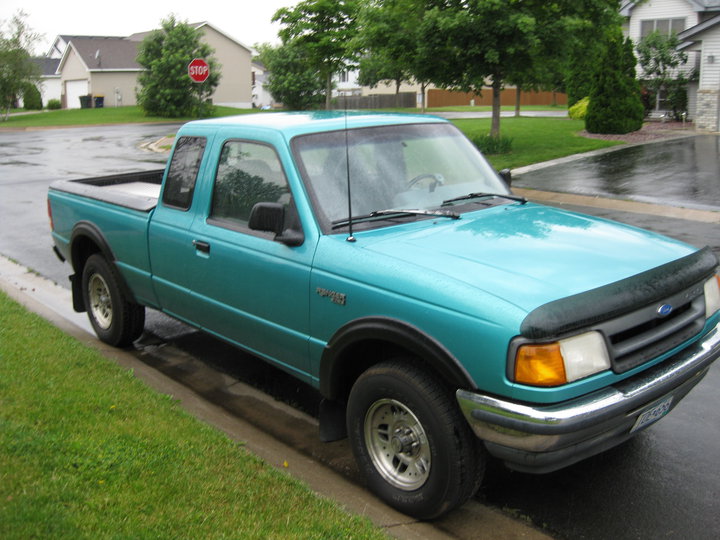
1993 Ford Ranger, Source | Car Gurus
Second Gen
Continued changes with the second-generation Ford Ranger – 1992 through 1997 models – saw some new styling elements, including redesigned seats and door panels, along with the discontinuation of the 2.9-liter engine, replaced by engine choices in the 2.3, 3.0 or 4.0 liter size. Of these changes, Ford decided to make the Ranger more aerodynamic in 1993- a long time coming change, 10 years to be exact.
Overall the truck had smoother lines, and other changes included flush-mounted door glass, wider doors, and slight fender flares. The 1989-style dashboard remained, but the seats and door panels were new. A new "Splash" model was also introduced this year, which had a flareside bed, unique aluminum wheels, and a special paint scheme. The 1993 Splash models were only available as a regular cab, later models could have either cab.
For 1994 there were little changes, but 1995 saw a number of changes for the Ranger, mostly interior and under the hood. The dashboard was completely redesigned, and it allowed room for a passenger's side airbag, installed in 1996. The A4LD transmission was updated. 2.3L and 3.0L models got the 4R44E, while 4.0L trucks got the 4R55E. The front brakes were changed to use the same 2-piston brake calipers as the second generation Explorer, and four-wheel anti-lock brakes were added as standard on 4x4 and 4.0L models.
At the end of this gen, the Ranger was upgraded and, to some, downgraded too. In 1997 a new five-speed automatic transmission became available with the 4.0-liter V6 engine, which improved both performance and fuel economy. The 3.0-liter V6 was now standard on all 4X4s (not just SuperCabs as before) and was made available on Rangers with the Flareside box. The 4X4 models, however, lost their formerly standard four-wheel ABS to the options list.
A grand exit
The third, and final generation Ranger (at least in the U.S.), was from 1997 through 2012, with the 1998 model debuting a longer wheelbase and cab. As part of the Ford Ranger’s evolution, the later models had engines cranking out 143 hp from a 2.3-liter four-cylinder or 207 hp from the four-liter V-6 – a far cry from that first Ranger’s measly 72 hp. Inside, one could still find that '95-'97 interior. Mechanically, the Ranger's twin I-beam front suspension was replaced by a wishbone-style system and the front half of the frame was of "boxed", rather than C-channel construction.
In 2001, the Ranger received yet another facelift, including a new grille, hood, and front bumper, as well as updated headlights and taillights. In 2004 the Ranger received minor updates to the grille, hood, and front bumper. New front bucket seats were also added in 2004 to meet the new U.S. Federal safety requirements. In 2006 the Ranger received more minor updates to the grille, front turn signals and taillights, along with a bigger rear Ford logo that was now centered in the middle of the tailgate.
The Ford Ranger is a trendsetter in more ways than one. Long before anyone heard of a Volt, Leaf, or Tesla, there was the Ford Ranger EV – yes, an electric Ranger. Produced from 1998 to 2002, this battery-powered electric vehicle looked just like its fossil-fuel powered brethren, with the exception of a small door covering a charging port on the front grille.
Ford understood, and still understands, the wild side of some truck drivers and in 2002 debuted the new FX4 Ranger for those who wanted to go off-road. Offered only on the XLT Extended Cab model, the FX4 was included a limited-slip differential, 31-inch BFGoodrich all-terrain tires, special 15-inch alloy wheels, tow hooks, skid plates, Bilstein shocks, special exterior trim and sport seats. In 2003, they upgraded the FX4 package offering two versions: standard and serious-duty Level II, the latter adding a Torsen limited-slip differential, 31-inch (outside diameter) off-road rubber mounted on Alcoa aluminum wheels, tow hooks and two-tone interior trim.

2012 Ford Ranger, Source | Motor Trend
That's all folks...or is it?
Clearly the writing was on the wall in 2012, and what it read was that American truck buyers were shifting away from compact trucks, like the Ford Ranger, to full-size ones, like the F-150 or Chevy Silverado. Bolstering Ford’s belief that its decision to discontinue Ranger sales in the U.S. was a sound one, were industry sales figures that showed U.S. compact pickup sales declining from 1.2 million units in 1994 to just 264,000 units in 2012. Furthermore, two numbers even further solidify that decision – 330,125 and 55,364. The former is the number of Rangers sold in the U.S. in 2000, the latter the number sold in 2010 – a stunning sales decline of nearly 275,000 Rangers or 83 percent annually over a decade.
Ford, understandably so, believed that discontinuing the Ranger wouldn’t have a significant impact on its bottom line, in part because they figured Ranger owners would simply upgrade to newer fuel-efficient F150s with a V-6. That reasoning looked good on paper, but in reality, many Ranger owners may have simply shifted loyalties as Toyota Tacoma’s market share in the compact truck segment jumped from 38% in 2011 to 54% in 2012 – the same time the Ranger was discontinued. Coincidence? Probably not. What it may indicate instead is that compact truck owners love their compact trucks, and with good reason. They're nimble, easy to park, great in city traffic, good on gas and surprisingly tough and hard-working.
The Ford Ranger, it seems, is everywhere on the road today, thanks to its strong sales over several decades and the ready availability of parts to keep them on the road for decades to come. Further proof of the Ranger’s enduring popularity – it was featured on MTV’s hit series “Pimp My Ride” when they took a 1985 Ranger – featuring a broken grille and back window and paint scheme whose dominant color was primer gray – and tricked it out for its 18-year-old owner.
With a new Ford Ranger available outside the U.S., Ranger lovers still hold out hope that Ford one day will make the Ranger available again stateside and Ford has released info saying it will in the 2019 model year. Until they do, what’s your reason for loving the Ford Ranger?



